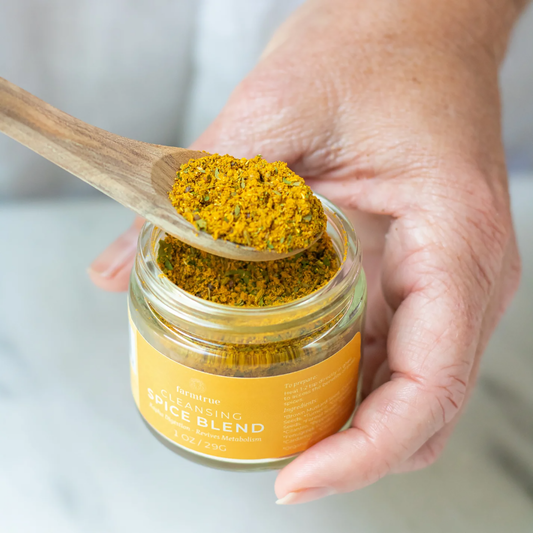How to Do an Ayurvedic Cleanse at Home: A Gentle Guide to Detox and Rebalance
Feeling sluggish, bloated, or a little off-balance lately? If your digestion feels heavy or your skin’s lost its glow, it may be time to reset. A simple Ayurvedic cleanse can help you restore clarity, energy, and inner balance—without extreme diets or harsh detoxes.
Key Takeaways
-
Ayurvedic cleansing focuses on balancing digestion and removing toxins (ama) gently.
-
Self-detoxes can be done at home with food, herbs, and lifestyle changes.
-
Spring is an ideal time for cleansing, but it’s safe year-round.
-
Ayurveda emphasizes preparation and post-cleanse care to avoid imbalance.
What Is an Ayurvedic Cleanse?
In Ayurveda, detox isn’t about deprivation—it’s about supporting your body’s natural intelligence. The goal is to remove ama, or metabolic waste, which builds up when digestion (agni) is weak. Over time, ama can clog the body’s channels (shrotas), leading to fatigue, dull skin, bloating, and more.
A properly done Ayurvedic detox helps reset your digestion, restore your energy, and improve the flow of nutrients and waste through your system.
Benefits of Ayurvedic Detoxing
-
Lighter digestion
-
Clearer skin
-
Enhanced energy and mood
-
Improved sleep
-
Stronger immunity
-
Better elimination
The 3 Phases of an Ayurvedic Home Cleanse
1. Preparation Phase (15 Days)
The first step is to strengthen your digestion by following a detox-friendly diet and daily routine.
Eat:
-
Light, warm, easy-to-digest meals
-
Cooked fruits (apples, prunes, figs)
-
Steamed vegetables (leafy greens, cabbage)
-
Whole grains (barley, quinoa, rice)
Avoid:
-
Leftovers, packaged, or frozen foods
-
Refined sugar and processed snacks
-
Cold, raw, oily, or heavy meals
Lifestyle tips:
-
Drink hot water or herbal detox teas throughout the day
-
Get gentle daily exercise (yoga, walking)
-
Sleep before 10 PM, wake before 6 AM
-
Practice daily self-massage (abhyanga) with warm herbal oil
2. Cleanse Phase (45 Days)
Once digestion is strong, begin herbal detox support while continuing the diet and routine.
Herbs for whole-body cleansing:
-
Triphala: Supports bowel regularity and gentle elimination
-
Liver and blood support: Look for herbs like manjistha, turmeric, or neem
-
Urinary detox: Herbs such as punarnava and gokshura support kidney and bladder function
Always choose high-quality Ayurvedic supplements. Ideally, consult with a qualified practitioner to tailor your herbs to your dosha and imbalances.
3. Post-Cleanse Care (7–10 Days)
This phase is essential to lock in the benefits of your cleanse.
Do:
-
Slowly reintroduce heavier foods
-
Keep following your body-type diet
-
Rest well and avoid overexertion
-
Begin rejuvenation with Ayurvedic tonics (rasayanas), such as amalaki or ashwagandha
FAQs About Ayurvedic Detox
1. When is the best time to do an Ayurvedic cleanse?
Spring is ideal, but anytime you’re feeling sluggish, bloated, or mentally foggy can be a good time—just ensure you’re not too depleted or ill.
2. Is it safe to detox without a practitioner?
Yes—simple at-home cleanses are generally safe when done gently. However, if you're unsure or have health conditions, consulting an Ayurvedic expert is always best.
3. What should I expect during the cleanse?
You may feel more tired at first as your body eliminates toxins. After a few days, people often report feeling lighter, more energized, and mentally clearer.
Conclusion: Cleanse with Compassion, Not Force
Ayurveda teaches us that health is about balance, not extremes. A well-planned self-detox helps your body naturally release buildup without depleting your energy. Whether you’re new to Ayurveda or returning to it as a seasonal ritual, an at-home cleanse is a gentle and effective way to reset.
Listen to your body. Go slow. Stay consistent. And enjoy the renewed clarity that comes with a clean slate—inside and out.
© 2025 Haveda. All Rights Reserved. Haveda does not provide medical advice, diagnosis or treatment. These statements have not been evaluated by the Food and Drug Administration. Products are not intended to diagnose, treat, cure or prevent any disease. See additional information.













